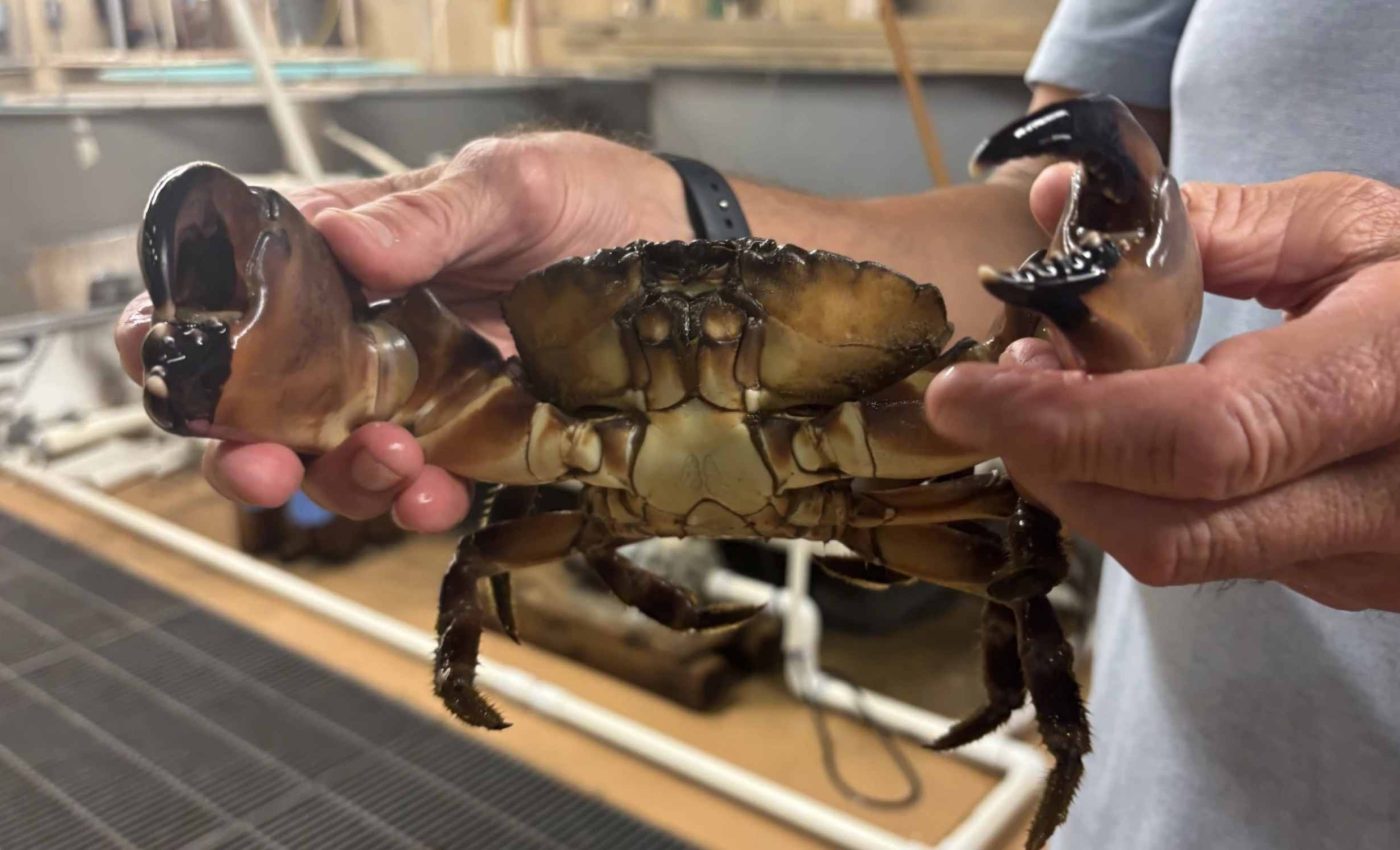
Scientists confirm the first sighting of stone crabs in Virginia waters
Virginia scientists confirmed the first officially recorded stone crabs in Chesapeake Bay this summer. Four adult males turned up near Norfolk’s Willoughby Spit and now sit in tanks at VIMS in Gloucester Point.
Their arrival lines up with a Bay that is steadily warming. Scientists call this tropicalization, a poleward shift of warm water species.
Why stone crabs are in Virginia
Lead researcher Romuald Lipcius, of William & Mary and the Virginia Institute of Marine Science (VIMS), is coordinating the documentation.
He leads the long running blue crab winter dredge survey and has quickly added this newcomer to his watch list.
“This is a tropical species, evolutionarily. That’s why you never found it north of North Carolina,” said Romuald Lipcius, professor at William & Mary and the Virginia Institute of Marine Science.
Laboratory work places stone crab survival near 41 degrees Fahrenheit, with a lower limit between 41 and 50 degrees Fahrenheit (between 5 and 10 Celsius). In recent decades, the Bay rarely holds that deep chill for long.
Fishery built around claws
Florida’s fishery does not take whole crabs, it takes claws and returns the animals alive under state regulations. The meat sits mostly in those huge claws, which can regrow over time.
That does not mean clawing is harmless. Survival depends on careful handling, and some crabs die after declawing, so managers watch the fishery closely.
If stone crabs settle in Virginia, a small seasonal fishery might emerge in time. Any move would need clear population data and rules that match local conditions.
For now, Virginia allows up to two recreational crab pots without a license, with marking and season limits set by state rules. People who use more pots or sell what they catch need licenses and follow commercial regulations.
Warming and stone crab migration
Marine species often track their preferred temperature ranges. As oceans warm, these boundaries move, and animals follow them northward or into deeper waters.
This process, known as range expansion, happens when new regions cross the survival threshold for a species once limited to warmer zones.
Recent research shows that global marine heatwaves have increased both in frequency and intensity since the 1980s.
These events not only alter migration routes but can also trigger lasting changes in local ecosystems as species find new strongholds.
The northward drift of stone crabs mirrors a larger reshaping of the Atlantic coast. As ocean temperatures rise, tropical and subtropical species are showing up hundreds of miles beyond their historical limits.
Recent data from NASA and NOAA show that average sea surface temperatures in the mid-Atlantic have climbed nearly 2 degrees Fahrenheit since the 1980s.
That small shift is enough to make the Chesapeake Bay more welcoming to animals once confined to Florida and the Carolinas.
Stone vs. other crabs in Virginia
Stone crabs carry pale horizontal leg stripes and black claw tips, and they can reach about 6.5 inches across the shell.
Atlantic mud crabs top out near 2.5 inches and show crusher claw fingers that fade from black to white at the base.
Reports should include clear photos of the top and bottom because look-alikes are common in the lower Bay. Scientists are building a map of confirmed finds to test whether the species is reproducing locally.
Juvenile stone crabs pack into structure, and oyster reefs often serve as a nursery in estuaries, based on Gulf field reports. The shells, crevices, and attached life on reefs offer shelter and steady food.
That dovetails with the Bay’s oyster restoration, which has expanded reef habitat over the past decade. More structure could help recruits settle if larvae arrive in warm years.
Tracking a changing coastline
The stone crab’s appearance in Virginia reflects a larger pattern unfolding along the Atlantic seaboard.
Dozens of warm water species, from shrimp to tropical fish, are extending their ranges northward each decade as sea temperatures climb.
Marine biologists are using tagged specimens and satellite temperature records to track these shifts in near real time.
Data from NOAA show that surface waters in the Chesapeake have warmed nearly 2 degrees Fahrenheit since the 1980s, enough to cross thresholds that once kept tropical species away.
Stone crabs are native to the U.S. coast and are not invasive here. They overlap with resident crabs in prey and habitat, so managers expect coexistence while monitoring any shifts.
“I think the stone crab’s here to stay,” said Lipcius.
—–
Like what you read? Subscribe to our newsletter for engaging articles, exclusive content, and the latest updates.
Check us out on EarthSnap, a free app brought to you by Eric Ralls and Earth.com.
—–













